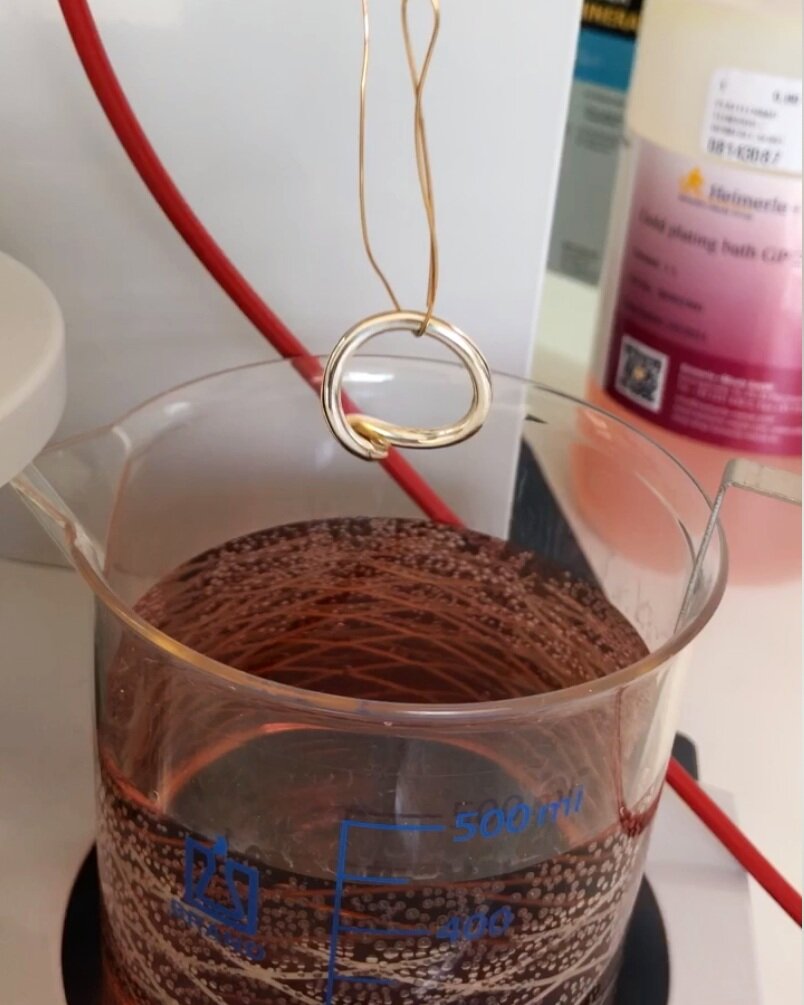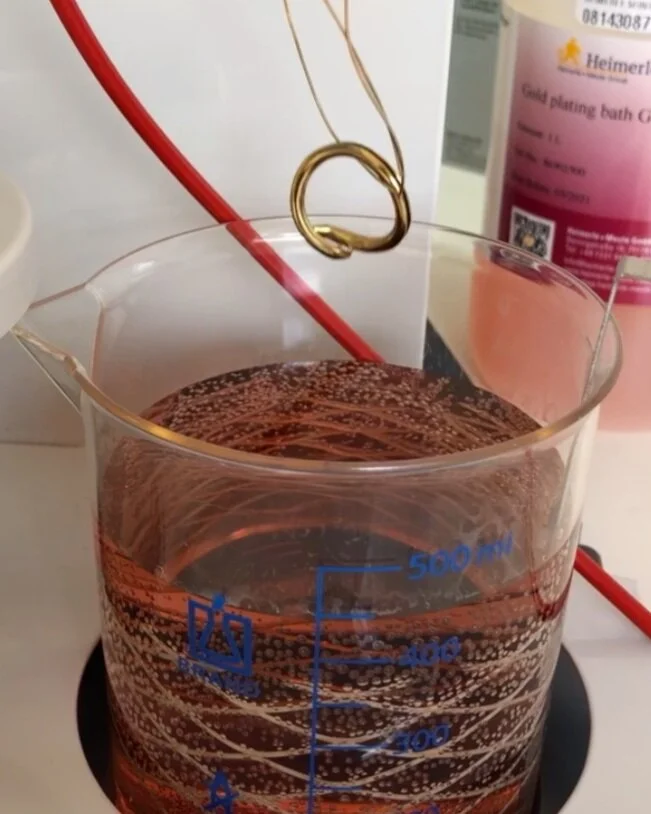Gold plating jewellery - the process and the benefits
If you have already discovered our jewellery collection, you might have noticed that we offer all our rings, earrings and necklaces in sterling silver and also in gold plated silver. The benefits of choosing to gold plate our pieces, is that it reduces the cost in comparison to solid gold jewellery. Love, Nena hoops are statement earrings, specially the large ones, and we love how gold looks against every woman’s skin tone. So in order for us to be able to offer you statement earrings with a gold finish, and stay competitive, gold plating is ideal for our jewellery collection.
What is also important in choosing gold plating, is that gold does not tarnish, rust, corrode and is hypoallergenic. Due to these great qualities and to avoid allergic reactions, we choose to coat our jewellery with a thick layer of gold.
Gold plating is a process where a layer of gold is bonded onto a base metal, in our case that base is sterling silver. Plating jewellery with gold is an easy process but requires expertise and several steps. The piece of jewellery must first be cleaned thoroughly and removed of all pollutants. This is very important as dirt and oil on the base metal will keep the gold layer from bonding correctly with its base. For this process we use a salt solution and an electrical charge. After that, the piece is cleaned in distilled water. The next step is dipping the jewellery piece in an acid bath that will perfectly prepare the surface of the metal for the plating. For the final layer, the jewellery is dipped in a container with gold and a positive electrical charge is used to fuse the gold onto the base metal. The jewellery stays submerged for a certain period of time, depending on how thick the plating is supposed to be. Once the gold plating thickness has been achieved to satisfaction, the jewellery is rinsed again and carefully wiped.
Here the ring in sterling silver base is dipped in the gold bath to initiate the plating process.
After the gold bath the ring has a thick layer of gold evenly distributed.
Gold plating is measured by a unit called a micron, or 0.001 of a millimetre. Anything above 1 micron of plating is standard gold plating, with 2-3 microns being very good quality. Plating with a thickness of around .17 is called gold electroplated or gold wash/flashed. This is an extremely thin layer (about 0.05% of gold) and is only recommended for jewellery pieces that are sheltered from heavy wear and tear, like pendants and earrings. This thickness of plating wears off quite quickly. The ideal thickness for gold plating is around .5 to 1.0 microns. While this might sound like a thin layer, it’s sufficient even for jewelry pieces that are exposed to rough wear, like rings and bracelets. Plating at around the 2.5-micron mark is quite thick and known as heavy gold plated.
Our Love, Nena jewellery is plated with a thickness of 2-2.5 microns, these types of thickness will last a lifetime if not abrasively removed. We make the gold plating process ourselves in our Amsterdam studio, which means we control exactly the thickness we want for each of every one of our jewellery pieces.
Once you purchase one of our gold plated jewellery pieces in the collection, it is very important that you take good care of it in order to ensure it will last longer and stay as beautiful as it is in the beginning. Here are some suggestions:
Keep gold plated jewellery away from chemicals, oils and make-up. It’s a good idea to always put on your plated jewellery last, after applying makeup, hairspray and perfumes. When doing some cleaning around the house, take off your gold plated jewellery as the chemicals in soaps, detergents and cleaners can impact the plating.
It’s a good idea to keep your hands clean when handling gold plated jewellery so try to wash them before putting on and taking off your jewellery.
Don’t expose gold plated jewellery to chlorinated or salty water. This means taking off the jewellery before swimming in pools or the sea.
Body oils and sweat can impact gold plating. To counter this, wipe the jewellery down with a very soft cloth. We recommend to remove your jewellery before going to the gym or your yoga class.
Avoid any harsh chemicals or abrasive cleaners. Avoid brushing or rubbing the plated jewellery, as this can make it flake, exposing the metal below.
If you are curious for more tips visit our jewellery care page, to make sure you take good care of your loved pieces.
Love,
Nena


